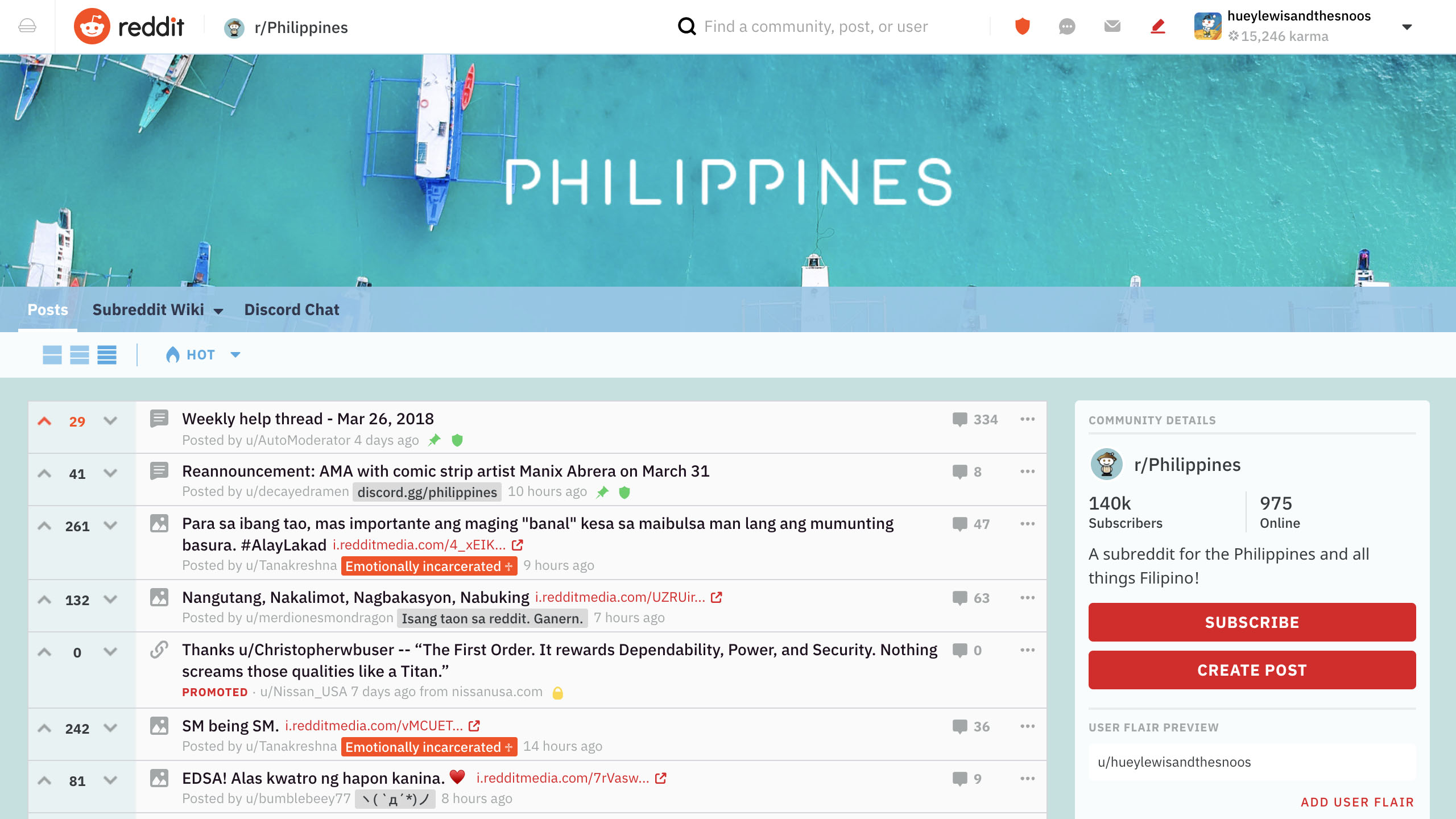We’re all familiar with the term ‘one hit wonder’, and many artists or groups have had huge success with a single song, then subsequently nosedived into commercial oblivion with their following tracks.
The lifecycle of a website can be disturbingly similar, at least to a point. There’s a kind of gravitational force which acts on all websites, pulling them down the search engine rankings as they’re replaced with newer, fresher, more successfully promoted sites.
If you want to defy this natural force, you’ll need a promotional plan, many clever tricks, and a concerted effort from your web development team. With that in mind, here’s a list of 20 ways in which you can promote your website, and keep it as visible as possible.

1. Be SEO smart
Most of the time, your website will be found via a search engine, and the vast majority of folks out there are using Google for search duties. And where your site is placed in terms of the rankings in any given search is heavily influenced by how Google matches the words and phrases that people are using to search.
Consider altering the site’s content to include popular phrases that people are searching for, and find the magic words that you need using the Google AdWord keyword planner. This process – although there’s a lot more to it – is known as SEO, which stands for Search Engine Optimization.
2. Get reciprocal
The more links that external websites have to your site, and the more links you make to them, will be seen by search engines as a good reason to elevate your importance as a web location.
Therefore if you have commercial relationships, you can strengthen those by exchanging links and building a flow of traffic between your mutual sites. This is especially useful if you are part of a bigger conglomerate, where the group site can link to all the subsidiaries without the need for permissions.
3. Facebook ads
If you want to sell door-to-door, then you need to turn up when people are at home, and the web equivalent of this is catching them on social media. Despite some recent flattening of growth, many millions of people still use Facebook, and this platform has the advantage that you can target users of a specific age or gender, those with certain interests, or those who follow particular brands or celebrities.
4. Connect with influencers
Perhaps you can’t get an A-list star to blog about your products or services, but maybe you could find a blogger who has a dedicated following that they can influence.
Compared with celebrity endorsements, the costs will be minimal, and some might even cover a product for a free sample if asked.

5. Go beyond Google
Google may be the search giant of the world, but not everyone uses it. For example, in China, more surfers use Baidu. Submitting to all those other search engines aside from Google and Bing is a worthwhile exercise, especially if you do business in locations outside of the US and Europe.
Instead of submitting to each engine in turn, use a tool like Submit Express to hit a large number in a single operation.
6. Use YouTube
The right video on YouTube can rapidly attract tens of thousands of views, and can subsequently generate links in Facebook and Twitter. Even if it’s just a recording of a seminar speech or something made to promote a new product line, it’s all worth placing on YouTube to create interest and attract visitors to your website.
7. Be adaptable
Tracking and analyzing information from your website will tell you where visitors typically enter, and the pages they most often access. You can then concentrate on enhancing the more popular areas of your site – and deprioritize the sections which see less traffic – and that should hopefully see your visitor count grow. Not only that, but those who do visit will be more likely to come back, elevating your status with search engines.

8. Use Reddit
Modestly labelled as the ‘front page of the internet’, any news story or press release from your company should be put on here, with links to bring people back to your site.
However, be advised that Reddit users can take a dislike to anything perceived as overtly corporate, so be careful about how you position content and interact with the denizens of the site.
9. Be a community player
As a representative for your business, you might want to join appropriate Facebook and Google+ groups, so that you can tap into what they’re thinking, and how they react to product launches and promotions.
10. Be professional
If you post images on your website or social media, then make sure they’re really good quality ones, and even consider having them link to the full resolution original.
The same goes for video footage. Avoid portrait recordings made by a phone with no image stabilization, at the very least.
11. Answer questions
People love online experts who can answer questions, so be one of them. There are numerous question-and-answer forums run by the likes of Quora, Yahoo, and so on, which are all free to join.
You might also consider adding a question page to your site. You could then take the best answers, and use them to construct a FAQ (Frequently Asked Questions).

12. Create infographics
Infographics are those charts which you see here and there about the web, which graphically illustrate an interesting trend or the breakdown of a market by percentages. Making one that relates to your business, or the market that it operates in, and then distributing this infographic is an excellent way to get visitors.
13. Incorporate a blog
This is a method that both Google and Microsoft (and many others) employ, where they have senior staff blog about new or interesting products that they’re working on.
Visitors react better to people than corporate entities, and personalizing product development, in particular, can be highly influential. Often this is a much better way to release company news, rather than an official press release.

14. Use Google My Business
This is most useful if you run a local business where customers can physically come to your office or store to collect products, or engage in personal interaction. The Google My Business tool allows your company to appear on a Google Map search so that you can be found easily by anyone looking for you.
A nifty added benefit of being on here is that if your company name is searched via Google, the result returned will also bring up a map showing where you are.
15. Get a webmaster account
Most search engines have special accounts for those who run websites, and once you have this connection with them, you can use it to interact with the company about how you might improve your search ranking.
A Google account, for example, is an excellent way to make sure that the site is indexed correctly, and isn’t being ignored for some spurious reason.

16. Use email marketing
A timely reminder to previous customers or a nudge to potentially new ones is an effective way to stimulate web traffic. It’s also a great idea to include links to new and interesting content within the marketing email, stimulating the recipient to visit.
Just make sure that those who get the emails have a means to decline receiving any further messages, or you’ll get a reputation as a spammer.
17. Cross-marketing
Once you have a web presence up and running, make sure that the web address is clearly visible on all stationery, printed promotional materials, giveaway pens, T-shirts or other merchandize.
The more places that your web address is visible, the greater the chances that new folks will see the URL and decide to visit.
18. Have an email signature
All company emails should have a branded signature, and in that information, a link to the website should be included. By doing this, you ensure that any email which is forwarded to another person will include the link, and allow the recipient to click through to your site with the minimum of effort.

19. Invest in search engines
Search engine marketing allows you to promote the position you will appear at on a search, and those links that are present on the first page of results will get the majority of traffic for any given keyword.
Paying for a sponsored link enables this to happen, assuming you pay more than your competitors for each link that is clicked. Depending on the keyword, each click might cost you very little or a good bit more, but the fact that most large companies use this method demonstrates that it’s an effective marketing strategy.
20. Use Wikipedia
Most companies have a Wikipedia page, and those that don’t need to make one.
Not only is this a good place to chart the growth of the firm and how it compares to competitors, but it can also provide a good linkage to the main website that anyone researching a subject related to your business might run into.
from TechRadar - Internet news https://ift.tt/2IrOjxR
via
IFTTT

























